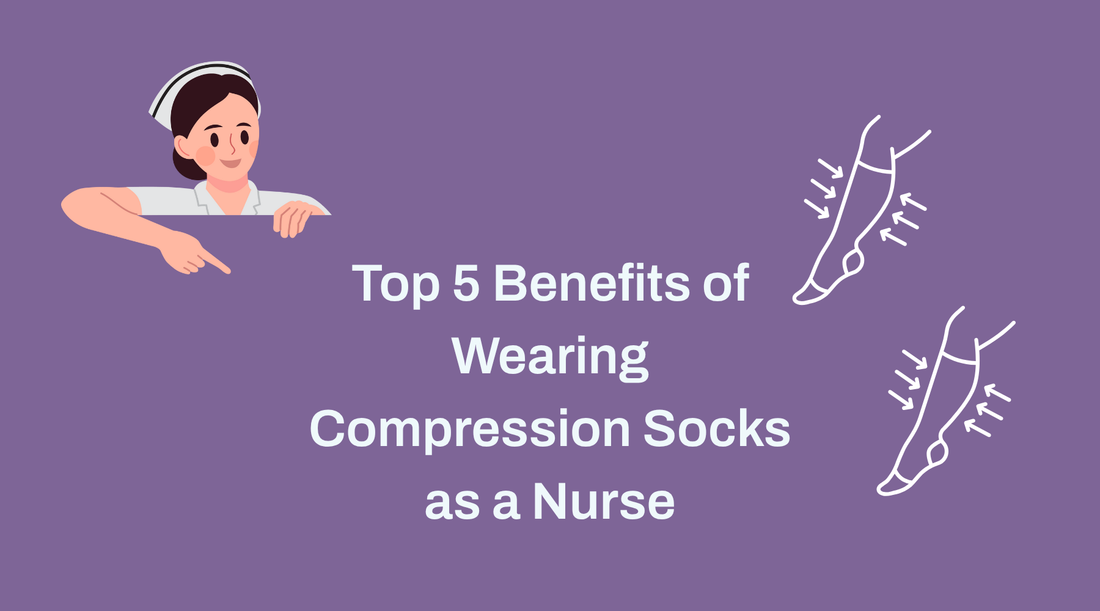
Top 5 Benefits of Wearing Compression Socks as a Nurse
What Do Compression Socks Do for Nurses?
Ask any seasoned nurse what hurts first after a long shift, and the answer is almost always the same: legs and feet. Between standing, walking, lifting, and bending, the strain on the lower body is constant—and cumulative.
Footwear gets plenty of attention, but nursing compression socks are just as important for reducing fatigue, improving comfort, and protecting long-term wellness. Here are five key reasons why they’ve become essential gear for today’s frontline professionals.
1. Improve Circulation and Blood Flow
Compression socks apply graduated pressure—firmest at the ankle, easing toward the knee—to push blood upward toward the heart. This counteracts pooling that occurs during long periods of standing.
For nurses, efficient circulation means less swelling, vein strain, and that heavy-legged feeling at the end of a shift. Choosing the best compression socks for nurses ensures this benefit is maximized day after day.
2. Reduce Swelling and Discomfort
Long hours on your feet often cause swelling in ankles, calves, and feet. Left unchecked, this can contribute to varicose veins, joint stiffness, and discomfort that makes even good shoes feel tight.
Nursing compression socks support fluid distribution to limit inflammation. For double shifts or long surgical cases, they help keep legs comfortable and protected.
3. Enhance Energy and Endurance
Fatigue isn’t just about sleep—circulation plays a big role. Compression supports oxygen delivery, reduces muscle vibration, and limits micro-tears.
- Less leg fatigue by hour ten
- Improved stamina through back-to-back patients
- Quicker recovery between shifts
In short, compression socks give nurses an edge that hydration and rest alone can’t provide.
4. Prevent Long-Term Vascular Issues
Years of standing without support can lead to varicose veins, spider veins, or chronic venous insufficiency. Nurses know these conditions well—but may overlook their own risk.
Compression socks improve venous return, reduce vein wall pressure, and act as a preventative measure. Starting early—especially in the first decade of practice—can make a major difference.
5. Boost Comfort Without Compromising Style
Today’s nursing compression socks go beyond the plain beige of the past. They’re breathable, moisture-wicking, and anatomically designed to stay in place all shift long.
Key comfort features include seamless toes, soft elastic cuffs, and arch support that reduces strain. For many nurses, switching from regular socks to compression is the difference between tolerating a shift and finishing it strong.
Support That Lasts a Career
Nursing demands more from your body than most professions. Protecting your legs, circulation, and energy should be part of your daily routine.
Whether you want to reduce swelling, fight fatigue, or stay comfortable through your longest shifts, compression socks are a smart investment. They don’t just make your day easier—they make your career more sustainable.
Ready to experience the benefits firsthand? Browse Neotrek’s full line of performance-engineered compression socks and discover what daily support really feels like.